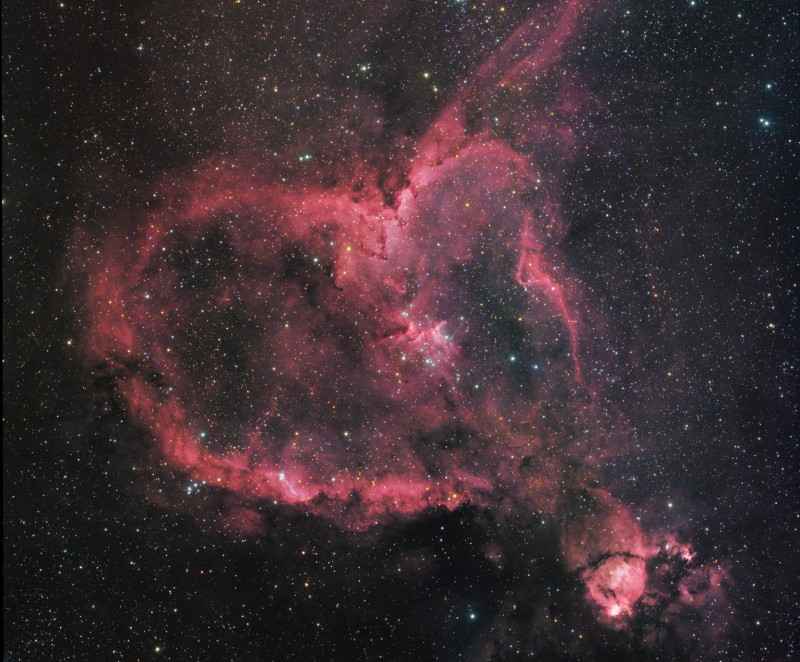Credit & Copyright: Daniel Marquardt
Explanation:
Sprawling across almost 200 light-years,
emission
nebula IC 1805
is a mix of glowing interstellar gas and dark dust clouds.
Derived from its
Valentine's-Day-approved shape,
its nickname is the Heart Nebula.
About 7,500 light-years away in the
Perseus spiral arm of
our galaxy, stars were born in IC 1805.
In fact, near the
cosmic heart's center are the
massive hot stars of a newborn star cluster
also known as Melotte 15, about 1.5 million years young.
A little ironically, the Heart Nebula is located in the
constellation
Cassiopeia.
From Greek mythology, the northern constellation
is
named for a vain and boastful queen.
This deep view
of the region around the Heart Nebula, cropped
from a larger mosaic, spans about
2.5 degrees on
the sky or about 5 times the diameter of the Full Moon.
1999 2000 2001 2002 2003 2004 2005 2006 2007 2008 2009 2010 2011 2012 2013 2014 2015 2016 2017 2018 2019 2020 2021 2022 2023 2024 2025 |
Январь Февраль Март Апрель Май Июнь Июль Август Сентябрь Октябрь Ноябрь Декабрь |
NASA Web Site Statements, Warnings, and Disclaimers
NASA Official: Jay Norris. Specific rights apply.
A service of: LHEA at NASA / GSFC
& Michigan Tech. U.
|
Публикации с ключевыми словами:
Cassiopeja - star formation - звездообразование - эмиссионная туманность - звездное скопление
Публикации со словами: Cassiopeja - star formation - звездообразование - эмиссионная туманность - звездное скопление | |
См. также:
Все публикации на ту же тему >> | |
